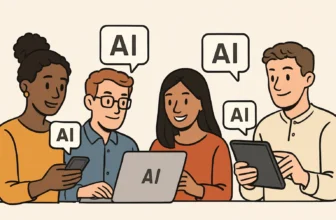
The AI Revolution: Rethinking Medicine
Did you know AI can now predict drug interactions faster—and often more accurately—than even seasoned pharmacologists? Yeah, let that sink in. A task that used to take teams of researchers weeks or even months can now happen in a matter of hours, thanks to clever algorithms and heaps of well-trained datasets. It’s not science fiction anymore. It’s here. And it’s quietly rewriting the rules of drug discovery as we know it.
If you’re in pharma or medical research, you’ve probably felt the pressure: skyrocketing R&D costs, clinical trial failures, regulatory hurdles that seem taller than ever. Honestly? It’s exhausting. We’re all chasing the miracle compounds, but the traditional pipeline is painfully slow and expensive. Sometimes it feels like finding a needle in a stack of needles. This is where AI in drug discovery is stepping in—not as a buzzword, but as a real solution making serious waves.
So, what’s AI actually doing in drug discovery?
I’ve seen researchers go from spending months on hit identification, only to have them fizzle out in trials. Now, with AI models trained on massive chemical libraries and real-world biological data, we can:
- Predict drug-target interactions with mind-blowing accuracy—before synthesis even starts.
- Repurpose existing drugs by spotting hidden connections we’d never think to test manually.
- Generate novel compounds using deep learning that looks beyond known structures to suggest creative, viable alternatives.
It’s like giving your research toolbox a turbo boost. I spoke with a small biotech founder recently who told me their team used pharmaceutical AI tools to whittle down 2,000 molecules to 50 promising candidates—in just a week. And here’s the kicker: two of those are now moving into animal testing. That’s the kind of time-shaving magic that AI is making possible.
Why this matters right now
The timing couldn’t be better—or more urgent. With global health challenges constantly evolving and patients waiting for better therapies, we just don’t have time for snail-paced drug development. McKinsey recently shared that AI could cut drug discovery costs by up to 70%. That’s not just an efficiency stat. That’s patient lives, budgets better spent, and innovation pipelines flowing faster than ever before.
Here’s how we make this real:
- Start small, think scalable: Don’t try to solve everything with AI right away. Begin with narrow problems like virtual screening or toxicity prediction.
- Build cross-functional teams: Pair data scientists with biochemists and medicinal chemists. The magic happens when different minds collide.
- Don’t wait for perfection: AI models improve with use. The sooner you get your data into play, the sooner you’ll see meaningful results.
What’s clear is that AI isn’t here to replace researchers—it’s here to elevate them. To amplify your instincts, fill in blind spots, and hand you a high-powered lens to look at compounds and mechanisms in ways we simply couldn’t before.
So, if you’ve been on the fence about integrating AI into your drug discovery workflow, let me tell you: the future isn’t coming—it’s already knocking. Let’s open that door together and see where it leads.
AI: A New Era in Drug Design
Did you know the average cost of developing a single drug can top $2.6 billion—and take over a decade? Yep. That combo of price tag and waiting time is enough to make any scientist sigh into their coffee. But here’s the good news (and it’s really good): artificial intelligence is stepping in like the lab partner we’ve always needed—faster, smarter, and incredibly efficient.
Let’s face it. Traditional drug development? It’s a beast. We’re talking mountains of data, unpredictable results, and years of trial-and-error. I’ve sat in rooms with researchers feeling the weight of it all—juggling clinical timelines, managing funding pressures, and just wishing there were a better way to make real progress. Sound familiar?
That’s exactly where AI is flipping the script.
So What’s Changing? Everything.
AI doesn’t get tired. It doesn’t take coffee breaks. What it does do is sift through mind-numbing amounts of chemical, genomic, and clinical data in record time—and it gets smarter with every cycle. Instead of spending years on hypothetical compound models, AI can identify viable drug candidates in weeks, sometimes even days.
Take this as a real-world win: researchers have used AI models to predict and design new molecules that target specific cancer pathways—think precision, not trial-and-error. In one case, an AI system screened 100 million compounds in under 24 hours to identify a potential drug for hepatocellular carcinoma. That would’ve taken a team months, if not longer.
Another jaw-dropper? The partnership between Insilico Medicine and pharma companies to develop an AI-designed fibrosis drug that went from concept to a pre-clinical candidate in fewer than 18 months. That’s practically time travel in pharma years.
How You Can Plug AI Into Your Research
You don’t need a PhD in machine learning to get started. Really. Here are a few ways you can begin to integrate AI into your workflow:
- Use AI-powered platforms: Tools like Atomwise, DeepChem, or BenevolentAI are designed for researchers. They help predict drug-target interactions and prioritize compounds.
- Start with a pilot project: Choose a known target or dataset and test an AI model’s output against traditional results. It’s low risk, big learning.
- Collaborate with data scientists: You bring the biology, they bring the code. Together? You just might find your next breakthrough with half the cost and twice the clarity.
What I’ve seen—and this is where it gets exciting—is that when AI and human insight work together, the results come faster and with more focus. Less burnout. More “aha!” moments.
The Future Looks Fast and Bright
If you’re navigating the high-stakes world of drug development, AI isn’t just a buzzword anymore—it’s a game-changer. It won’t replace your expertise (your brain is still the MVP), but it’ll handle the grunt work so you can focus on the big-picture science.
Let’s be real—diseases aren’t slowing down. So neither should we. With AI by your side, you’re not just speeding up research; you’re reshaping the future of medicine.
And I don’t know about you, but that gives me serious goosebumps.
Overcoming Challenges with AI Solutions
Did you know that over 80% of all medical data goes unanalyzed? Yep. Let that sink in for a moment. Imagine trying to find a life-saving treatment while swimming through a digital ocean of genomic profiles, clinical trial data, and real-world evidence—without a map.
For a lot of us in pharma and med research, data complexity is less of a speed bump and more of a full-blown roadblock. Between messy formats, massive volumes, and inconsistent quality, there’s just too much to handle with traditional tools. I mean, have you ever stared at a spreadsheet so big it made your laptop wheeze? Same.
But here’s the upside: AI thrives on chaos. While we’re banging our heads on our desks trying to clean up data sets, algorithms are already scanning, sorting, and learning from millions of data points—like it’s light work.
How AI Is Tackling the Data Monster
What I’ve found game-changing is how machine learning and natural language processing can sift through multi-omic data, patient histories, and even obscure clinical trial papers. AI can recognize patterns and make predictions in ways that used to take months of human labor.
One shining example? Antiviral drug discovery during recent global health crises. Researchers used AI to identify promising molecular targets for COVID-19 treatments by analyzing thousands of virology papers and databases in record time. Instead of waiting for manual data review, they ran simulations and uncovered potential compounds within weeks. Not years. Weeks.
So, Where Do You Start?
If you’re thinking, “Okay, but how do I bring this into MY research?” — I got you. Here are some solid first steps for implementing AI in your data analysis work, especially when it comes to clinical trials:
- Start with high-quality training data: Garbage in, garbage out. Work on curating and cleaning datasets before trying to plug them into a model.
- Partner with AI vendors or data scientists: You don’t have to go it alone. Collaborating can fast-track your learning curve and get projects moving faster.
- Pick a specific use-case: Test AI on a slice of your work, like patient stratification or adverse event prediction. Quick wins build momentum (and buy-in from your team).
At one point, I worked with a team trying to understand why a new cancer drug was failing in Phase II. We fed clinical trial data into a machine-learning model, and it flagged a specific genetic marker common among the non-responders. That insight? It saved the project. The company re-focused the next trial on the right population and saw real results.
The Takeaway
AI isn’t about replacing researchers—it’s about supercharging their brilliance.
When you’re knee-deep in complicated trial outcomes or overwhelmed by a tsunami of unstructured data, AI offers clarity, speed, and even a bit of sanity. By embracing these tools, you’re not just keeping up with the future of pharma—you’re helping drive it. And let’s be honest: who doesn’t want to be part of the discovery story of tomorrow?
The Future: Innovations on the Horizon
What if I told you that over 75% of the drugs predicted by AI models today could make it to clinical trials in a fraction of the usual time? Yep, that’s not sci-fi anymore—it’s fast becoming the new normal in pharma. We’re not talking decades. We’re talking years being shaved off discovery timelines. Less time waiting, more time healing. That’s the promise this next wave of AI brings to the table.
Now, I know AI in drug discovery still sounds a little futuristic to some teams—like something your IT department might mention, but the lab eyes with skepticism. I’ve been in those meetings. But here’s the thing: the technology has matured. And it’s not just about robots predicting molecules. It’s about unlocking insights that humans alone might miss. It’s about creating synergy between brilliant scientists (like you!) and tireless digital brains that don’t sleep, don’t guess, and don’t forget.
So, What Are These Game-Changing Innovations?
The hot buzzwords right now? Machine learning and neural networks. But let me break that down in plain language.
- Machine Learning: Think of it as supercharged pattern recognition. It processes millions of compound combinations and flags the ones most likely to work.
- Neural Networks: These mimic how our brains work. They’re helping decipher protein folding, chemical makeup, and interactions with astonishing accuracy.
- Generative AI: Some startups are now using AI to create entirely new molecules that wouldn’t occur naturally. Wild, right?
For example, take the drug candidate INS018_055 from Insilico Medicine—it’s heading into Phase 2 trials and was designed entirely with AI. Full-on inspiration from an algorithm, validated by wet-lab testing. Seriously, that’s the future knocking.
How to Prepare Your Team for an AI-Driven Tomorrow
Okay, so how do you not just keep up—but lead? Here’s what I’ve seen work:
- Start small and focused: Pick one phase—say, early target identification. Pilot an AI partner or tool there and let the data speak.
- Upskill your team: Host a day workshop or lunch-n-learn with data science basics. Researchers don’t have to code, but understanding how AI thinks? Game changer.
- Create a cross-functional taskforce: Bio guys, data people, IT folks—get them talking early. Collaboration is where the AI magic actually takes hold.
I helped a mid-sized biotech client do exactly this. They started with an internal “AI Curious” group—just 5 folks. Within 6 months, their pipeline had two promising molecules queued for AI-aided synthesis testing. It didn’t take a budget explosion. It took curiosity and a clear goal.
Looking Forward: It’s Not Just Science Fiction Anymore
If you’ve been sitting on the AI sidelines, now’s the time to step in. You don’t need to reinvent your whole research department overnight. But integrating these tools strategically might be the advantage that lets your team bring a breakthrough drug into lives years ahead of the curve.
There’s something exciting about being part of a turning point, right? We’re not just optimizing—we’re reimagining how we discover, trial, and trust the medicines of tomorrow. So roll up your sleeves. The future? It’s already here—we just need to work with it.
Ethics in AI Drug Discovery
Did you know that over 80% of AI algorithms used in medical research aren’t transparent about how they reach their conclusions? Yep—it’s like trusting a black box with your life’s work. Super unsettling, right?
It’s something more and more of us in the medical and pharma world are starting to wrestle with. We’re all for high-speed discovery and uncovering potential life-saving compounds faster than ever. But here’s the catch—when artificial intelligence starts recommending which drugs go forward and which get shelved, don’t we deserve to know exactly how those decisions are being made?
Here’s where it hits home: I was talking to a colleague last year—she’s knee-deep in early-stage oncology research—and she shared how her team ran a promising compound through an AI model. The model said “reject.” But when the team pushed back and ran additional lab tests (purely out of gut feeling), the compound actually showed incredible potential. They dug deeper and realized the model had been trained with outdated datasets that skewed the outcomes against newer compound categories. Major facepalm moment. And that, my friend, is just the tip of the ethical iceberg.
So, what’s the real challenge here?
- Algorithmic bias: If your data is biased, your AI will be biased. Plain and simple.
- Lack of transparency: Many AI tools don’t offer explanations for their predictions (aka “black box AI”).
- Accountability confusion: If a faulty AI recommendation hurts patient trials or delays discovery, who’s at fault? The model? The developer? You?
Here’s how we fix it (and yes, it’s totally doable):
- Create clear ethical guidelines and audit trails: Just like you’d log every lab test, AI decisions should come with documented reasoning. Think of it as your “AI lab notebook.”
- Use explainable AI (XAI): This type of model allows researchers to actually see why certain conclusions were reached. If you can’t explain it, don’t trust it.
- Build diverse, inclusive training datasets: This one’s huge. Include data from different ethnic groups, ages, and health conditions so AI doesn’t lean towards one-size-fits-none solutions.
Real-world case? Check out the controversy around the AI tool developed for prioritizing COVID-19 vaccine trials. Early tests favored younger, healthier patients—not exactly helpful when the highest-risk groups were older adults and people with pre-existing conditions. That sparked a complete overhaul of their data training protocols, and guess what? Transparency, fairness, and efficacy all improved.
Let’s build something better—together.
At the end of the day, AI isn’t the villain here. It’s just a tool. A powerful, genius-level, occasionally dramatic tool. We are the ones who shape how it’s used in this next wave of drug discovery. And with the right ethical grounding, we can push the industry forward while staying human at the core.
So the next time someone says “AI found a new compound overnight,” you can smile and ask: “Cool. What’s the dataset?” Because when ethics leads the charge, discoveries become more than fast—they become truly meaningful.
Embrace the AI-Driven Future of Medicine
Did you know that AI can now predict a drug’s success rate *before* it ever enters clinical trials—with up to 80% accuracy? Mind-blowing, right? That kind of precision used to feel like wishful thinking. But here we are… standing at the edge of a pharmaceutical revolution. And whether you’re elbows-deep in early-stage research or running clinical trials across continents, AI isn’t just the future—it’s your new lab partner.
Let’s get real for a second. I’ve talked to countless folks in pharma and research who say the same thing: “We’re buried under data, but starving for insight.” Can you relate? With petabytes of genomic data, molecular structures, and patient responses sitting in our laps, it’s overwhelming. Like trying to drink from a firehose. The challenge isn’t a lack of information—it’s transforming that flood into focused, fast, effective decision-making.
That’s where AI steps in like a total game-changer. It’s not replacing you. It’s augmenting your brilliance. Imagine reducing drug development time by years (yes, *years*), flagging toxic compounds before animals ever get involved, or finding viable repurposing candidates in days instead of months. That’s not sci-fi anymore—it’s happening in labs around the world.
So, how can you get started?
- Start small. You don’t need a PhD in machine learning to bring AI into your work. Begin with AI-powered data-cleaning tools or platforms that predict target interactions. Even plug-and-play solutions can create serious impact.
- Upskill and up-partner. Maybe you’re a researcher, not a coder—and that’s okay. But bringing in a data scientist or taking a short AI-for-life-sciences course can unlock some serious synergy. You don’t have to take this on solo.
- Look for early wins. Focus on one bottleneck—like molecule screening or clinical trial design—and experiment there. Getting a few quick wins will build momentum and buy-in from your team or stakeholders.
I recently worked with a small biotech team that was drowning in a backlog of assay data. They integrated a basic AI tool to flag noteworthy results. Within weeks, they uncovered a pattern in responses they’d overlooked for months—and it led to a promising lead compound they’re now pursuing. That’s the power we’re talking about here.
Bottom line? The AI revolution in drug discovery isn’t coming. It’s already here. And those leveraging it now will be the ones shaping the therapies of tomorrow. So take that first step—whether it’s learning, collaborating, or testing a tool. The future of medicine is AI-augmented, and it needs your insight, creativity, and courage.
Ready to disrupt the old timelines, crush inefficiencies, and accelerate healing? Let’s do it—together.













It’s fascinating how AI is shiftingBlog comment creation guide drug discovery from a trial-and-error grind to a more predictive science. What excites me most is the potential for drug repurposing—spotting therapeutic uses for existing compounds could drastically cut both costs and timelines. I’m curious how you see regulatory bodies adapting to validate AI-generated drug candidates more quickly without compromising safety.